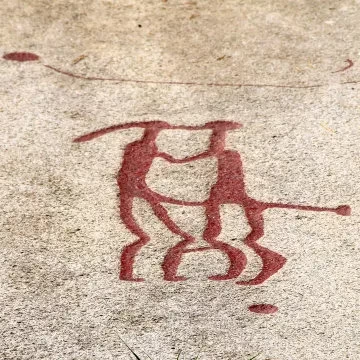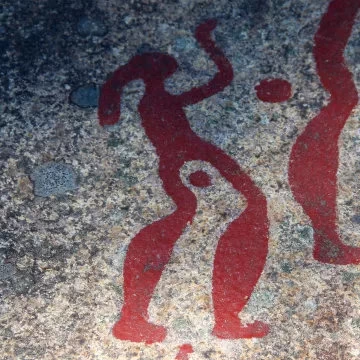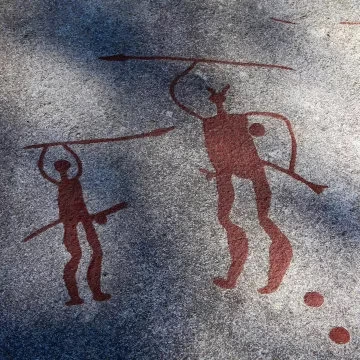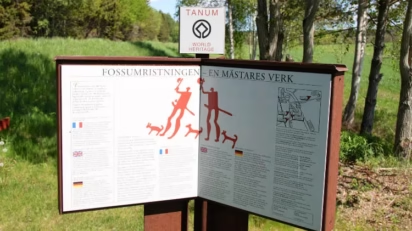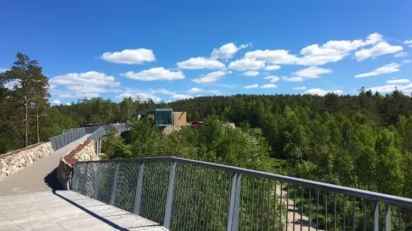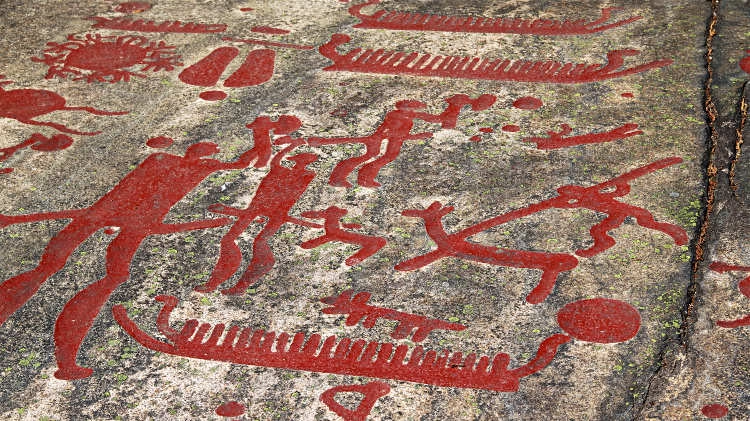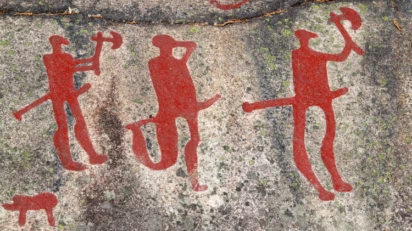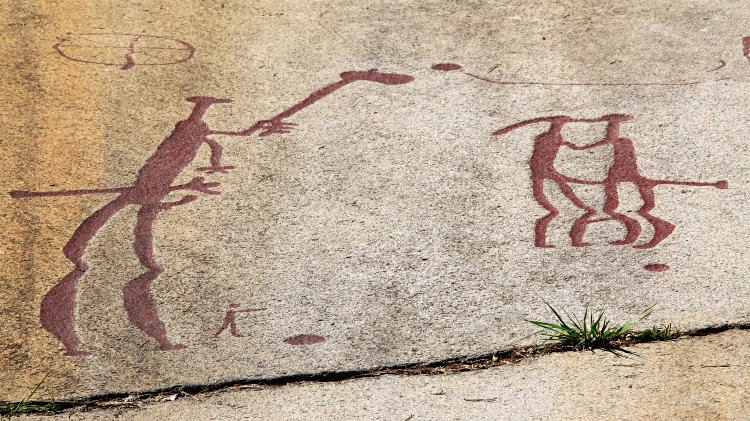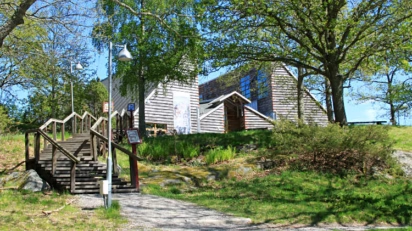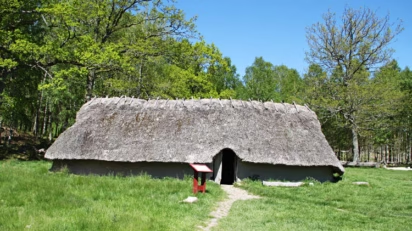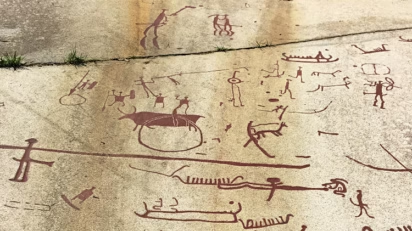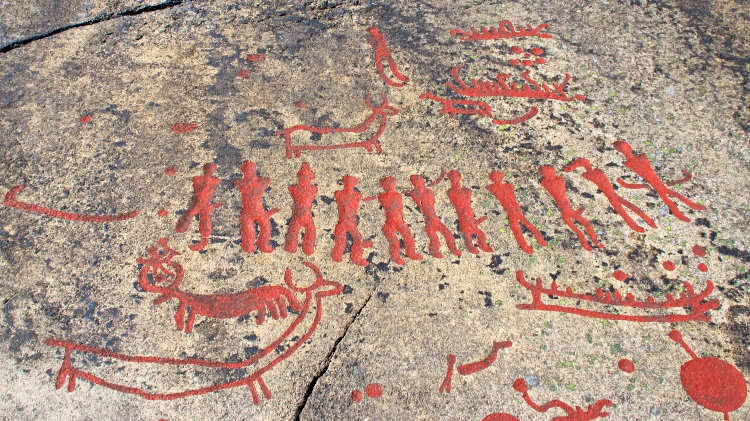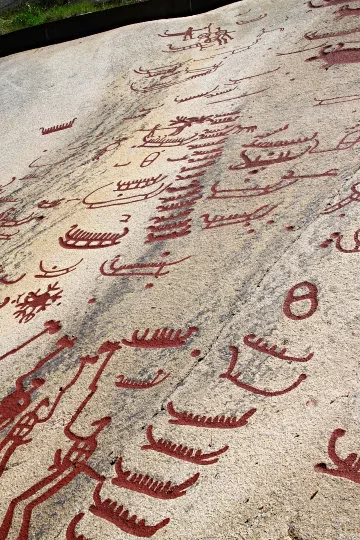The Bronze Age rock carvings near Tanum in the Bohuslän region of Sweden are UNESCO World Cultural Heritage-listed sites and easy to enjoy for free.
Thousands of rock carvings of people, animals, and boats made during the Bronze Age attract visitors to the Tanum area of Western Sweden. The high concentration of rock art here – 500 panels and thousands of carved images – led to Tanum’s inclusion on the UNESCO World Cultural Heritage list. Four major sites – Fossum, Vitlycke (with a museum), Aspeberget, and Litsleby – are free to visit and have information panels and parking. The Tanum rock carvings are a great day trip from Gothenburg or even Oslo.
The Tanum UNESCO World Cultural Heritage Area in Sweden
The Tanum UNESCO World Cultural Heritage area is in the province Bohuslän – roughly the area of western Sweden between the city Gothenburg and the Norwegian border. Bronze Age rock carvings are found throughout Bohuslän and much of the rest of Sweden and Scandinavia but the concentration is particularly high in the Tanum area.
The Tanum rock carvings are popular cultural sites to visit when on vacation at the islands and beaches of the Bohuslän coast. It is also a good day-trip destination from Gothenburg or Oslo and a perfect stop when traveling between these two cities.
Prehistoric Rock Carvings of Bohuslän, Sweden
Although the rock art of Tanum and the Bohuslän region is commonly described as rock carvings, the images were rather chipped or grounded into the rock with quartz, diabase, or a similarly harder rock. The correct term is petroglyphs while Felsritzungen in German and Hällristningarna in Swedish are less technical.
The rock carvings in Bohuslän were mostly made during the Bronze Age and early Iron Age – thus between 1700 BD and 200 BC. Different models of boats and weaponry, as well as the appearance of animals, help to date the works. The land rise – the area is around 25 m higher now than 4000 years ago – also help to date the various scenes, as underwater carvings seem highly unlikely.
The earliest written descriptions of Swedish rock carvings were only made in 1627 when Norwegian teacher Peder Alfssön thought they were made by bored medieval stonemasons.
The first mention of rock carvings in Tanum was only in 1751 when the large male figure (now usually referred to as the Spear God) at Litsleby was described as a Scottish chieftain who was killed during a plundering raid.
Whether the carvings were painted or not during the Bronze Age is still debated by experts. Nowadays, most of the carvings are painted red, which makes them easier to study, especially in the middle of the day when shadows are of limited help in defining the figures. They also look spectacular at night under a flashlight.
The Motifs of Tanum Rock Carvings in Sweden
The real purpose of the rock art remains unknown but the carvings were almost certainly of a religious or sacred nature. The same motifs recur: boats, cup marks, humans, animals, footprints, musical instruments, weaponry, carts, plows, wheels, and carriages. Simple daily life events and items such as houses, people at work, children, cows, and fish are never depicted.
Cup marks are the most common motif with around 40,000 known in the Bohuslän region. The purpose of these cupmarks is well debated: theories of what they symbolize include amongst others a representation of fertility, the sun, the moon, stars, life, death, rebirth, and simple calendars. Some were almost certainly used for offerings while others clearly hint at paths or movement.
Somewhat surprisingly boats are the second most common motif with around 10,000 known. Different boats are depicted but sails and oars are rare. People are often depicted in the boats and some scenes may show funerals.
People are also fairly common on the carvings with 98% of the gender identifiable portraits of men. Men are identified by showing a penis – often erect – and/or bearing weapons (usually undrawn swords). The women commonly have a ponytail.
Famous person depictions include the lovers (a couple kissing) at Vitlycke, the woman of Fossum, and the Spear God at Litsleby.
Again somewhat surprising, very few violent scenes are depicted – no murderous raiding and pilfering Vikings here. Although lots of weapons are shown, very little fighting or even active hunting is depicted. One scene at Fossum shows an animal actually being speared while others hint at dead animals (or people) without showing the actual moment of being killed. The weapons are probably for ceremonial use with swords rarely drawn.
The most common animals are bulls, horses, snakes, deer, and birds. Common animals such as cows, sheep, and fish are noticeably absent. Bulls are never shown doing any work although oxen are shown pulling carriages. Only around 50 agricultural scenes are known.
Many scenes are unidentifiable – some may simply be incomplete works. Sometimes scenes were carved over older ones and many are too worn to identify.
Visit the Tanum UNESCO World Cultural Heritage Area in Sweden
The Tanum UNESCO World Cultural Heritage area encompasses 45 km2 and has 500 different sites. The four most important ones have information panels, free parking, and are easily seen on a half-day trip:
- Fossum
- Vitlycke with museum and Bronze Age Farm
- Aspeberget
- Litsleby
The official information panels are in Swedish, English German, and French.
All these free sites are always open, have free parking and basic toilets. Food and drink are only available at the Vitlycke museum. The shopping mall directly at the highway intersection is a good place to stock up on picnic supplies and water.
Public transportation is less convenient but not impossible. See the Vitlycke Museum site for details and possible bike rentals.
Rest Stop – Rastplats Världsarv Tanum
For drivers, the Rest Stop (Rastplats) Världsarv Tanum on the E6 highway is a good place to start a visit to the UNESCO World Heritage-listed Tanum area. Information panels explain the rock art and place it into a broader historical context. A viewing platform allows visitors to look out over the plain that used to be covered by the sea in the Bronze Age – this part of Sweden rose around 25 m over the last 4000 years.
The Rastplats Världsarv Tanum is a good first stop and introduction but as no rock art is actually seen here probably fairly pointless to stop at later in a tour of the region.
The rest stop is 130 km north of Gothenburg and 165 km south of Oslo and is accessible from either side of the E6 highway. It is a good spot for a picnic and toilets. For other services – fuel and food – use the intersection with the 163 a further 2 km to the north.
Rock Carvings at Fossum in Sweden
Fossum is a good first stop to see the rock art of the Tanum region. Not only is the main panel here often considered the highest quality art but it is also easy to get to. The Fossum panel is only around 3 km from the E6 highway and the only major site to the east of the highway. Parking is to the right of the 163 road while the rock carvings are on the opposite side of the road.
Rather uniquely, the rock carving at Fossum is generally considered to be the work of a single master due to the similarity between around 200 figures and the cohesive composition. The carvings depict hunting scenes (including a rare kill), musicians and ax-wielding warriors. The weaponry helped to date the carving to the Late Bronze Age, 700-600 BC.
The woman of Fossum is one of the best-known rock carving figures. She seems to greet visitors with a raised arm while a cup mark between her thighs is usually interpreted as a symbol of life, a birth, the egg of life, or simply female genitalia. (Male figures and animals often have similar cupmarks between the legs or below the tail.) To her right are two lur blowers – musical instruments used throughout Scandinavia in the Bronze Age.
A short path leads to what is considered the most beautiful Sun Horse carving in the region – it is not colored and depending on light conditions fairly hard to see.
Vitlycke Museum, Bronze Age Farm and Rock Art
Visitors with limited time (or interest) should make Vitlycke the top priority. In addition to the small museum and Bronze Age farm, the Vitlycke panel is one of the largest and most important compositions and easily accessible.
Vitlycke Museum and Bronze Age Farm
The free Vitlycke Museum, Vitlycke 2, 457 93 Tanumshede, is fairly small and easy to enjoy. Almost all descriptions in the museum are in English and German in addition to Swedish.
Behind the museum is a small Bronze Age farm. It is worth entering the houses to experience what a Bronze Age home should have looked like. Activities aimed mostly at families are held commonly during holiday periods. A short walk through the forest leads past a few further Bronze Age scenes such as a sacrificial bog and models of animal traps.
The museum is open daily from May to early November from 10:00 to 18:00, closing at 16:00 from September. The museum is usually open on weekends in April with longer hours around the Easter weekend.
The museum also arranges guided tours to the sites – occasionally in English.
The Vitlycke Museum is the only site with a café, or any form of food or drink. (Scandinavians generally like to picnic on outdoor trips.)
Vitlycke Bronze Age Rock Carvings
Across the road from the museum and parking area is the impressive Vitlycke Panel. The carvings here were made mostly between 1000-500 BC but some of the last carvings were added as late as the early Iron Age, around 500 BC to AD 1.
The main Vitlycke panel has a large variety and number of images including arguably the most famous image from the Tanum rock carvings: the lovers, sometimes more poetically described as the Holy Bride and Groom or the Bridal Couple. It depicts a man and woman kissing.
The small carving of a whale, possibly a blue whale, is the only known depiction of sea animals despite the proximity to the sea and the very common depiction of boats.
A short path leads via a number of smaller rock panels with interesting carvings. One shows the most often depicted carving of all – a boat with people that is used on the current 50-krona note. It is possible to go all the way to the top of the hill where two large Bronze Age cairns survived – it is easy to skip this final ascent when wet and still see all the rock carvings on the route.
Aspeberget Rock Carvings
Less than a kilometer from the Vitlycke museum is the Aspeberget area. This hill, known as the Holy Mountain, is covered with rock carvings spread over around 20 different panels. This is the largest concentration of rock carvings in the region.
The main panel is a very short walk from the parking lot but a path of around a kilometer leads past the other panels.
The main panel shows a variety of animals, including several bulls, and a large fleet of boats.
Interesting depictions include a row of 11 people (including at least one woman) that is often described as dancers or a football team – one player has the ball (cupmark). Underneath this row is a scene where a person seems to leap through the horns of a bull – an image that reminds of the Mediterranean civilizations.
Many of the carvings here are not painted making many hard to decipher during the middle of the day but significantly easier early morning or late afternoon when shadows turn on the magic.
Litsleby Spear God Rock Carving
Turn right, shortly after the Aspeberget site, and continue along a narrow road for around a kilometer to the Litsleby site.
The main panel is very close to the parking lot and has the largest man depicted in rock art in Scandinavia. At 235 cm tall, this over-dimensional man wielding a spear is often referred to as the Spear God and seen as a precursor of the later Norse god Odin.
This was the first carving of Tanum described in writing when in the mid-18th century it was considered as a Scottish chieftain killed during a raid.
The earliest carvings here are probably from the middle of the Bronze Age (1200-1000 BC) while the last ones were added only by the Early Iron Age (500 BC to AD 1).
A short path up the hill leads to the Tegneby panel with a lovely carving of horsemen armed with spears and shields. These eight horsemen are dated to around 300 BC due to the Celtic shields.
Many national and regional museums in Scandinavia have further displays on prehistoric inhabitants of the region but the best is probably the Moesgaard Museum near Aarhus in Denmark while the National Museum of Denmark in Copenhagen has some choice pieces and fine artwork from prehistoric Scandinavia.




